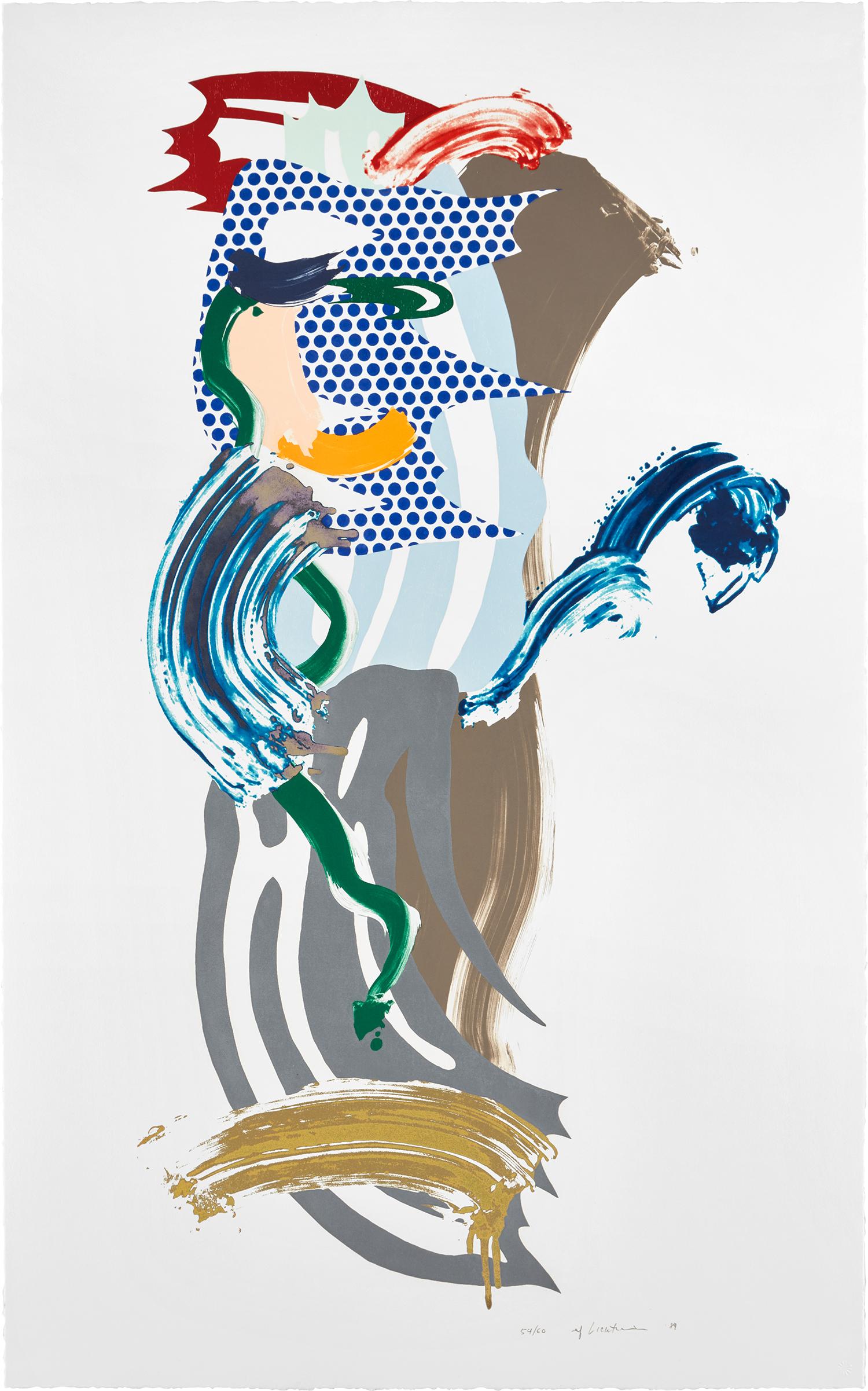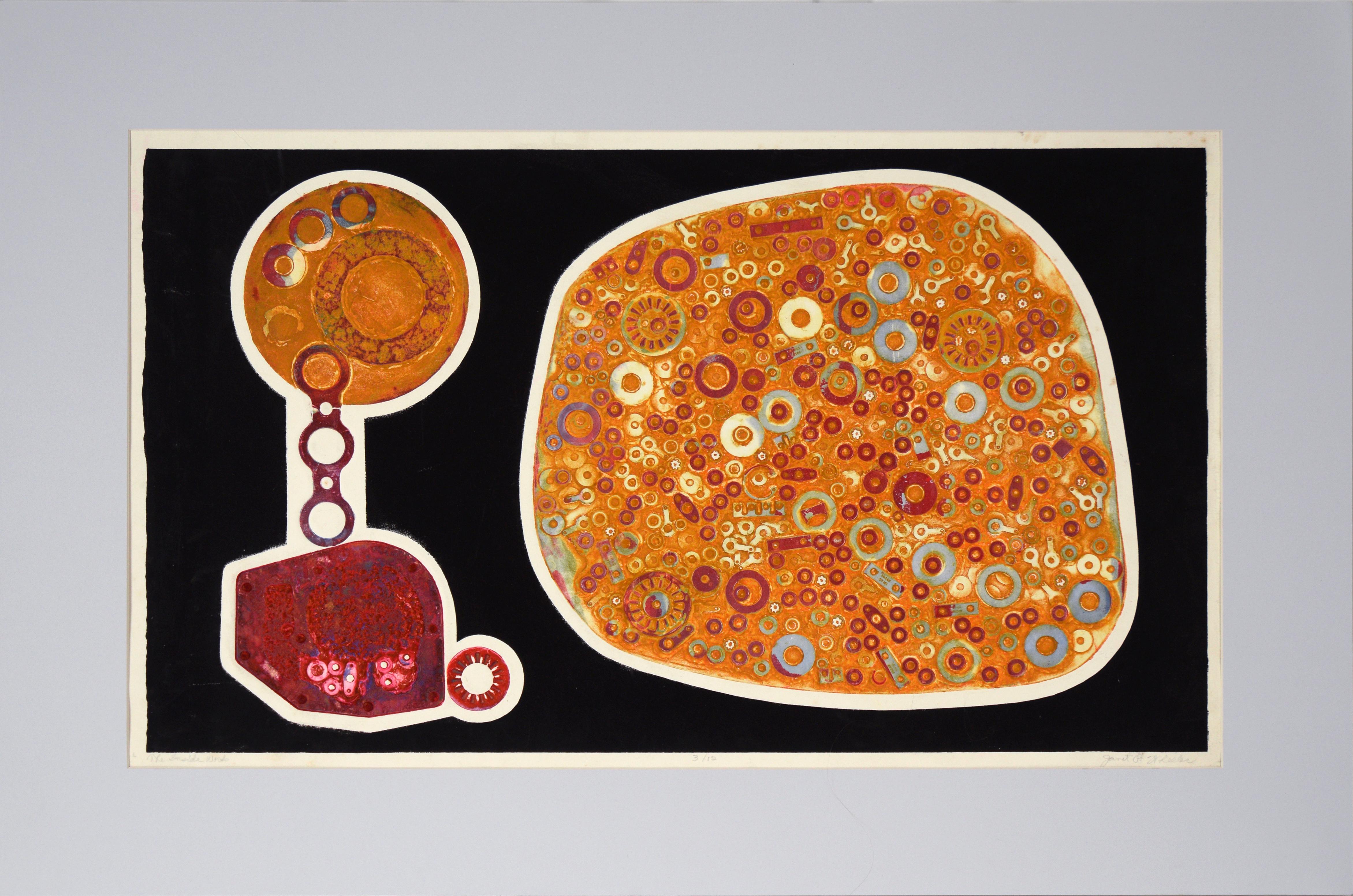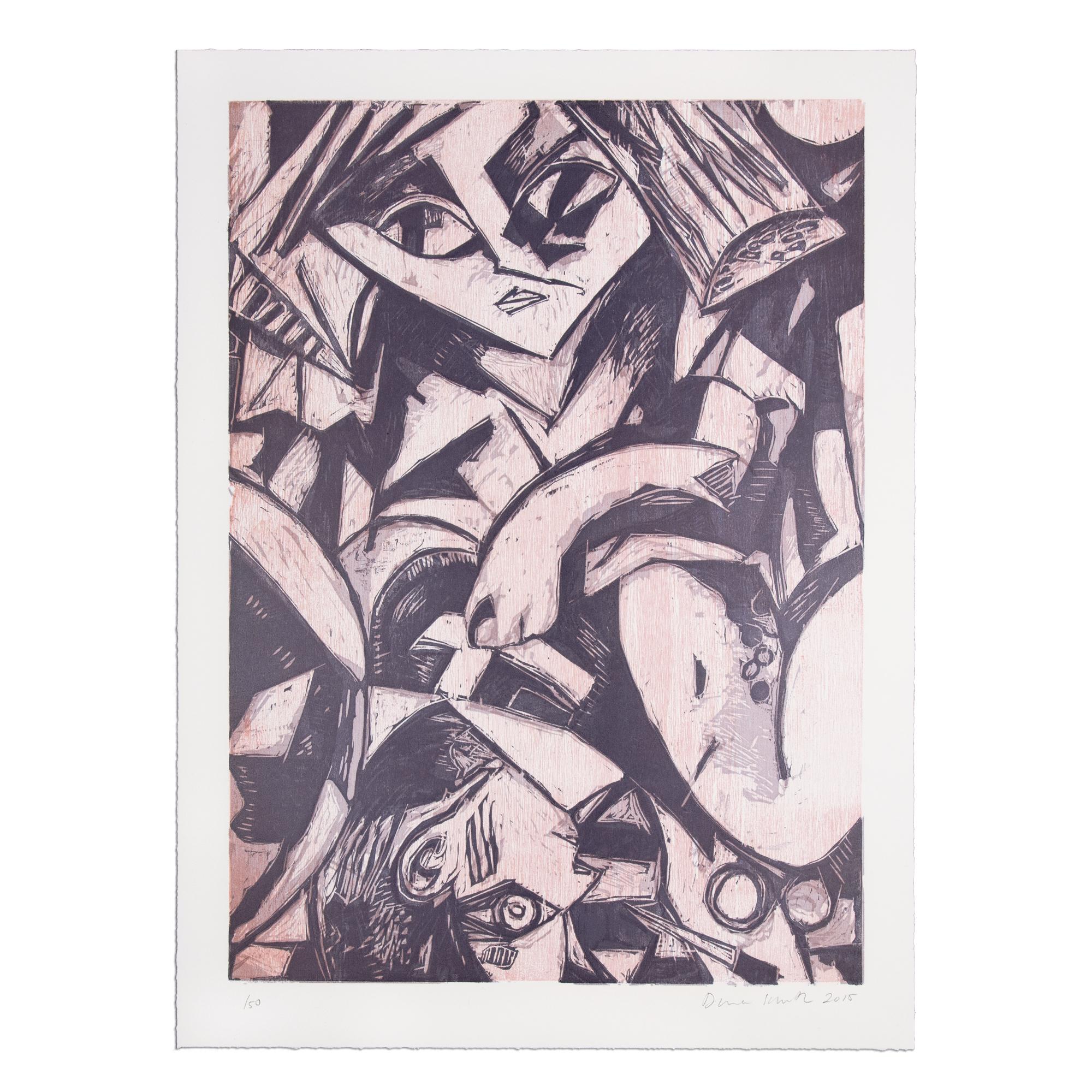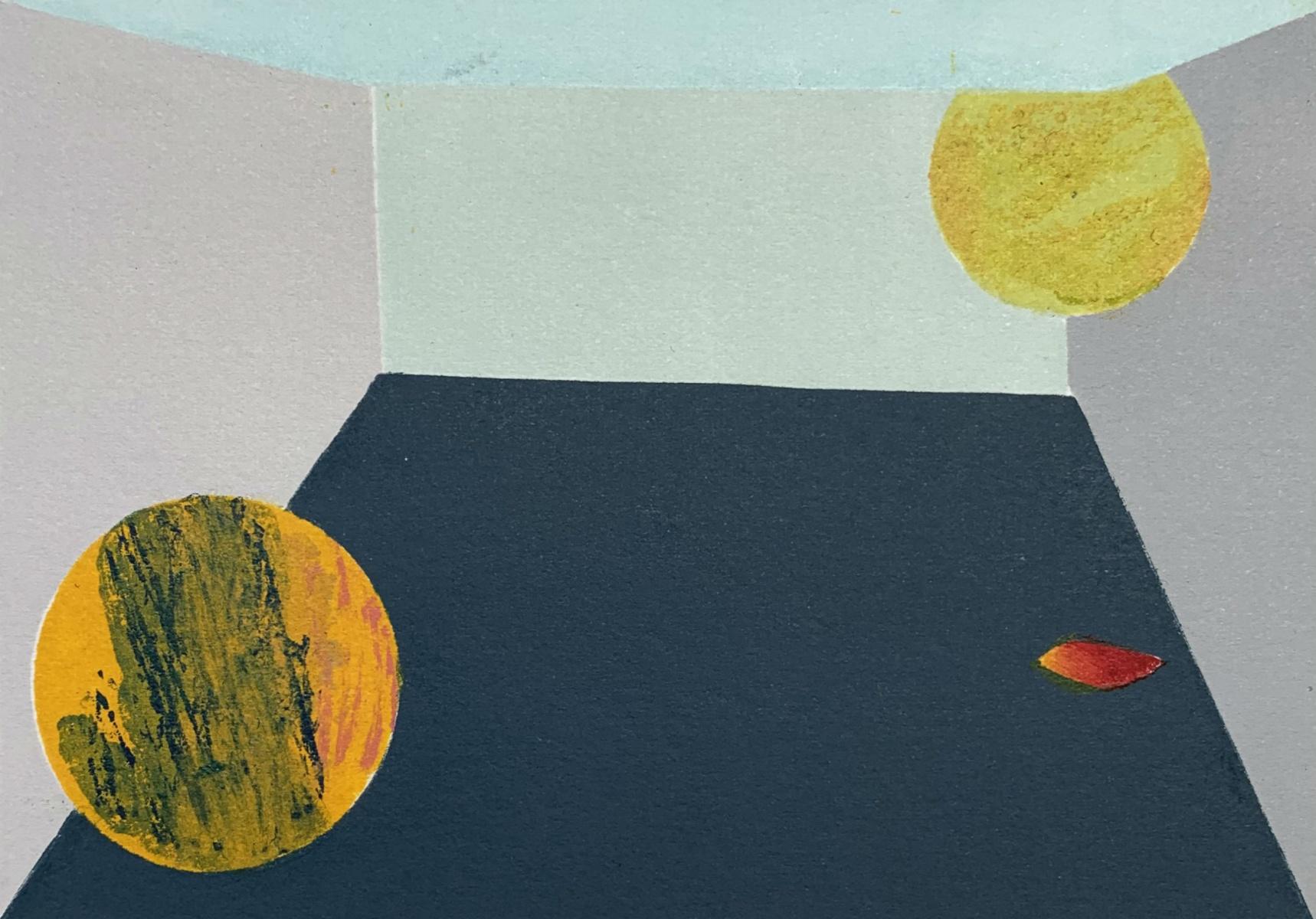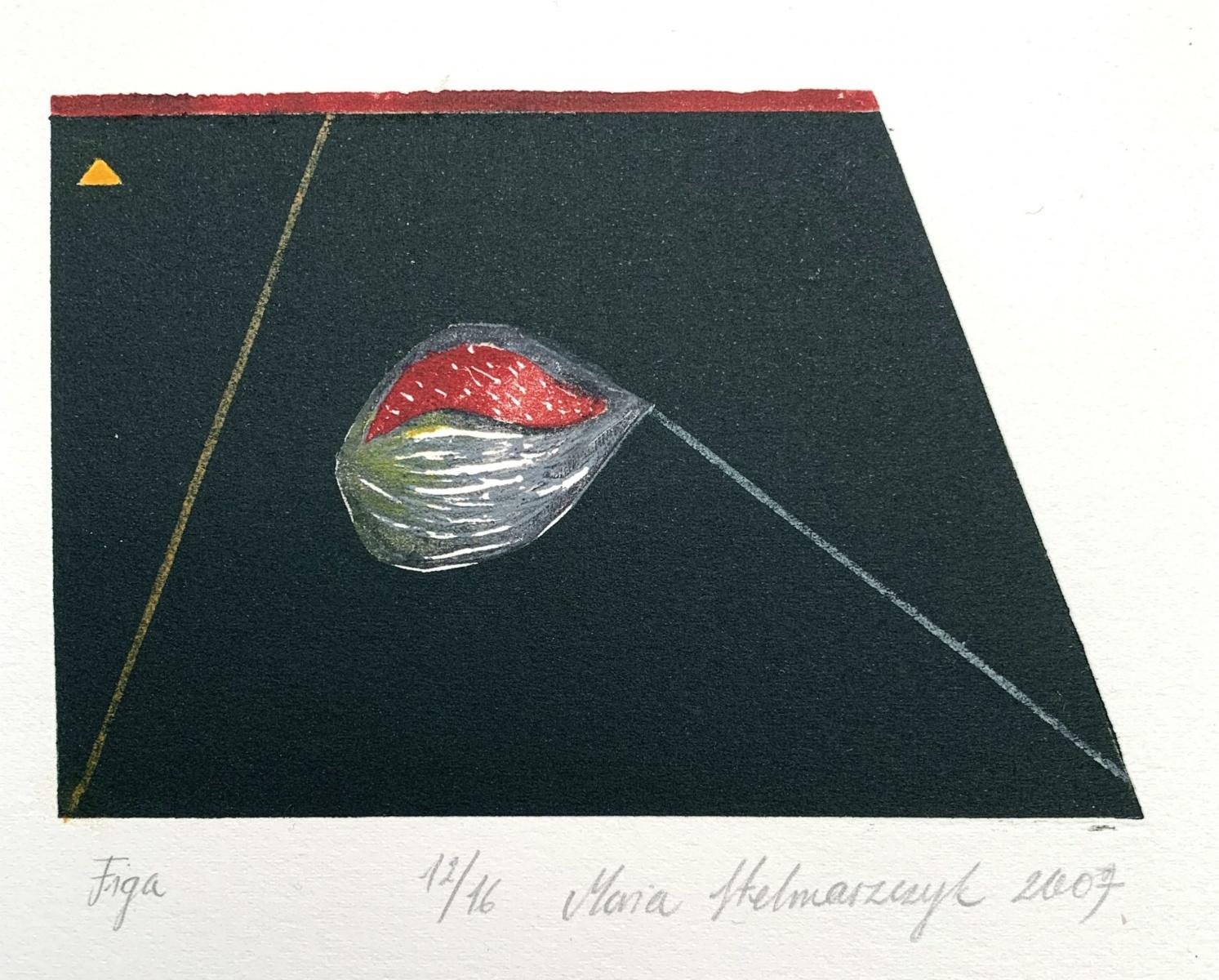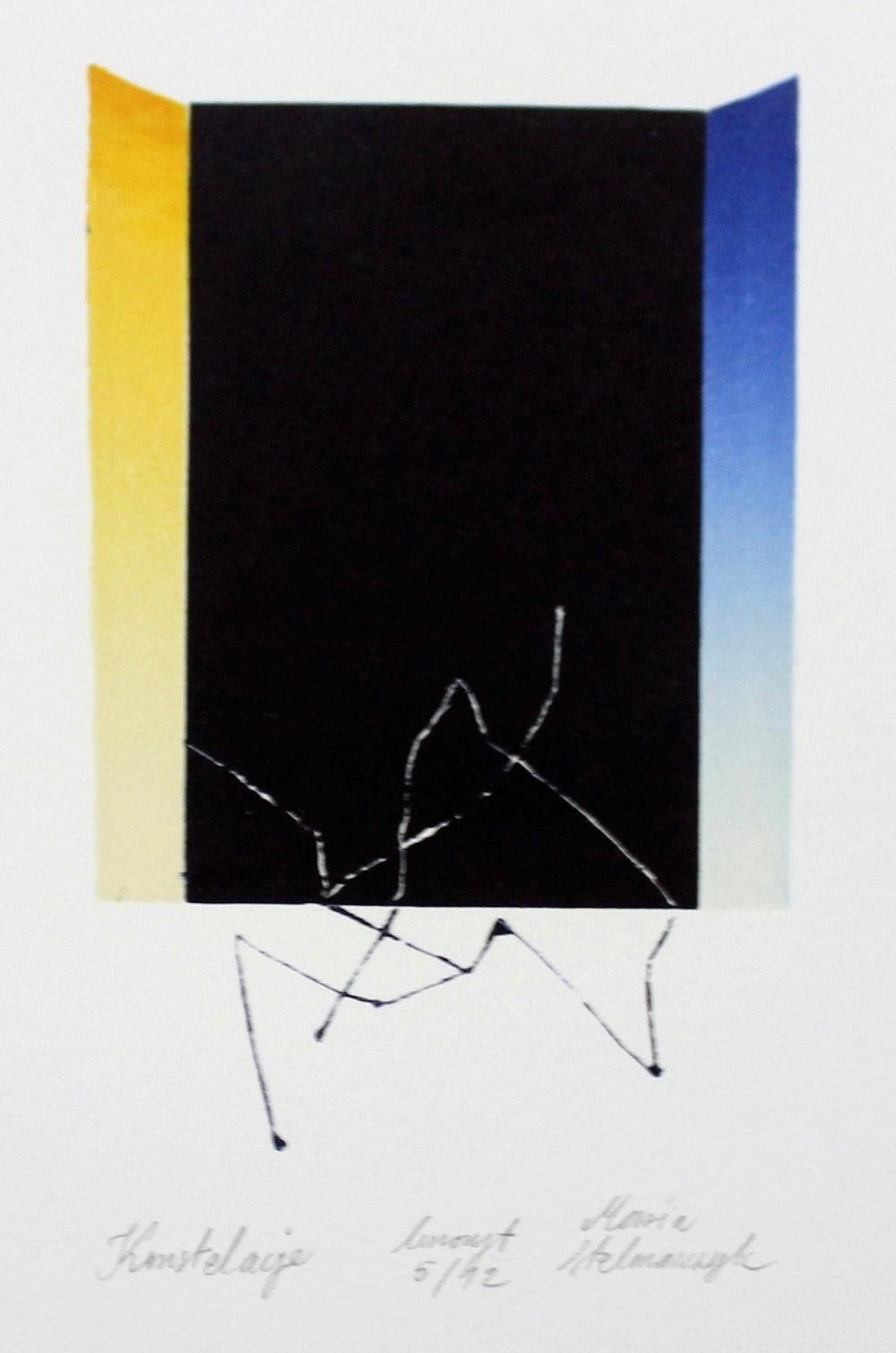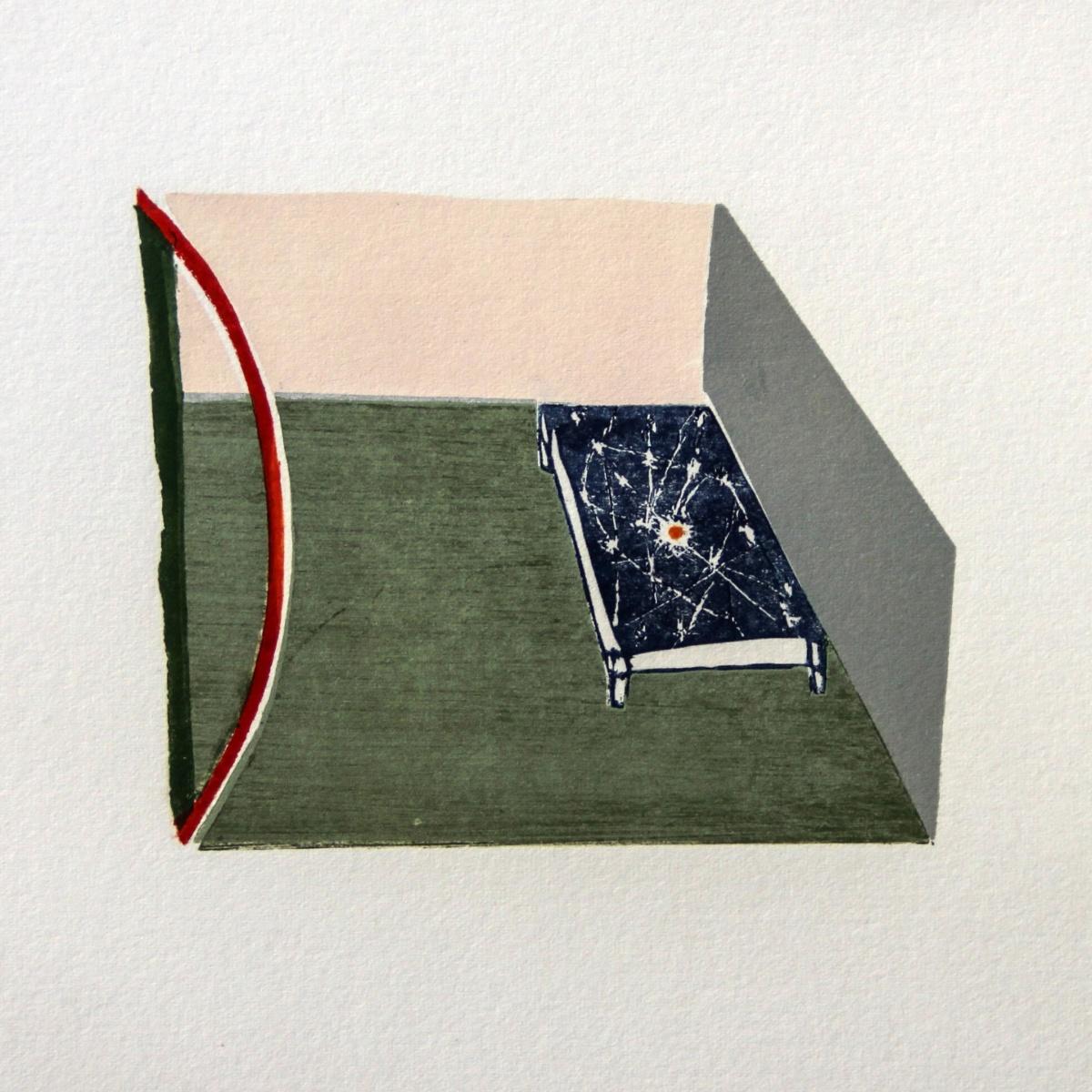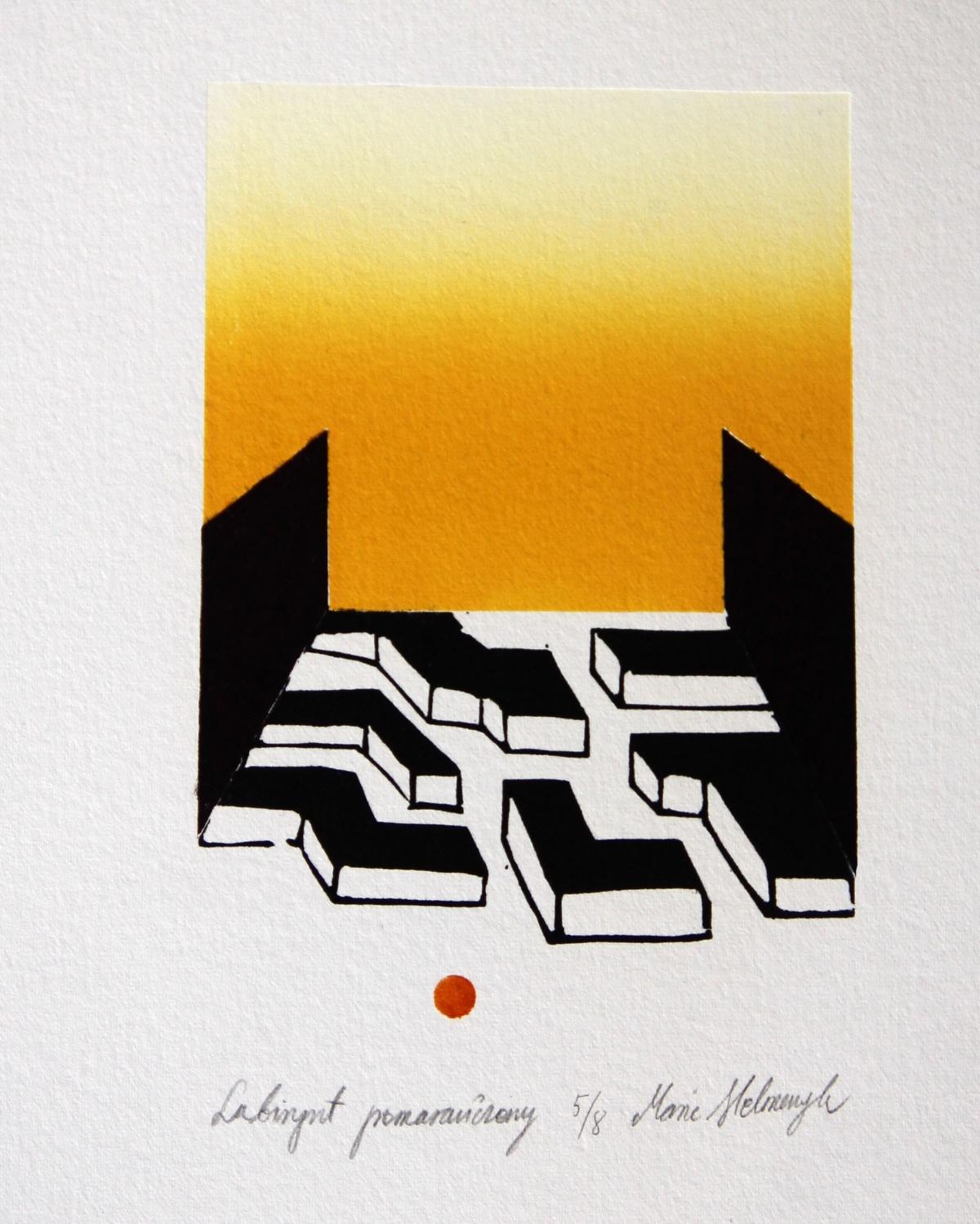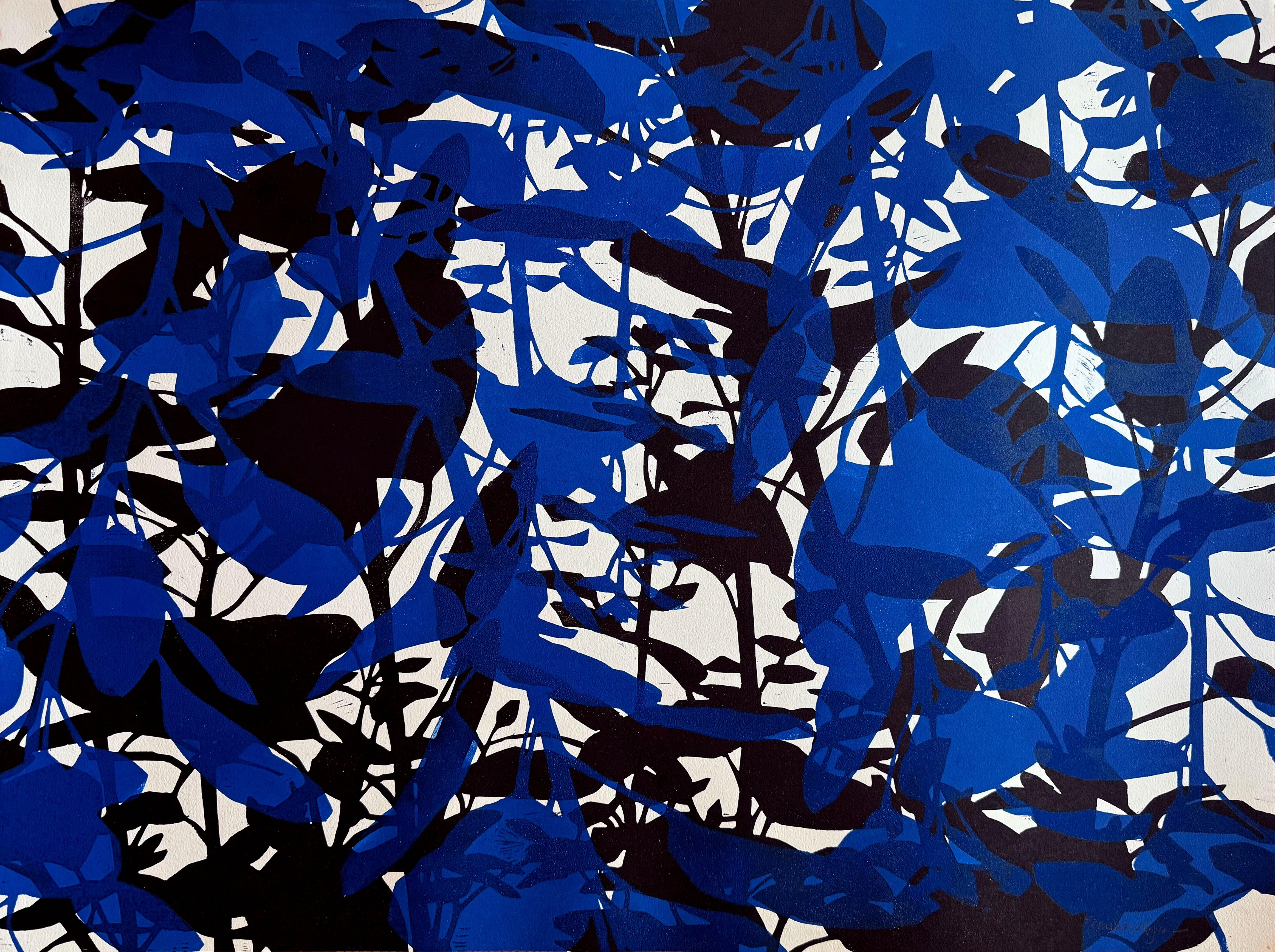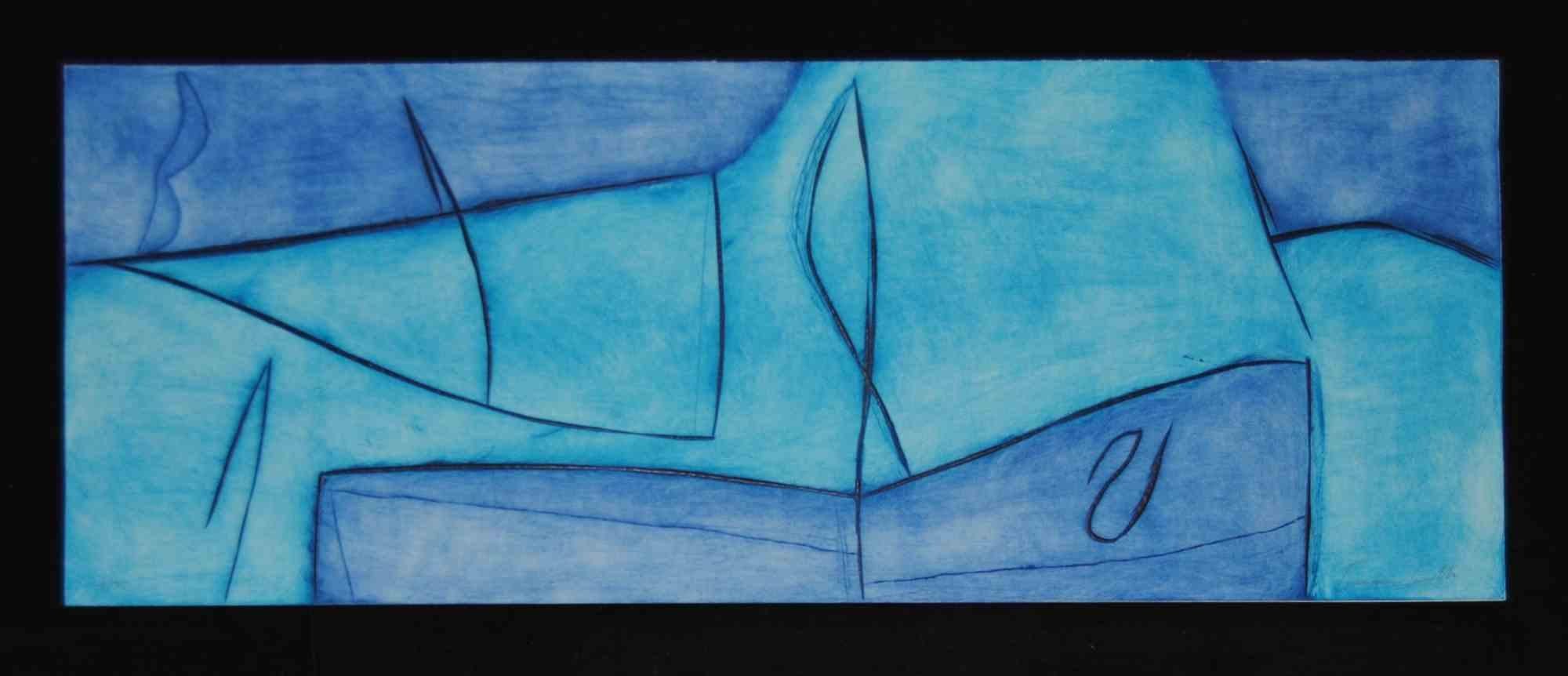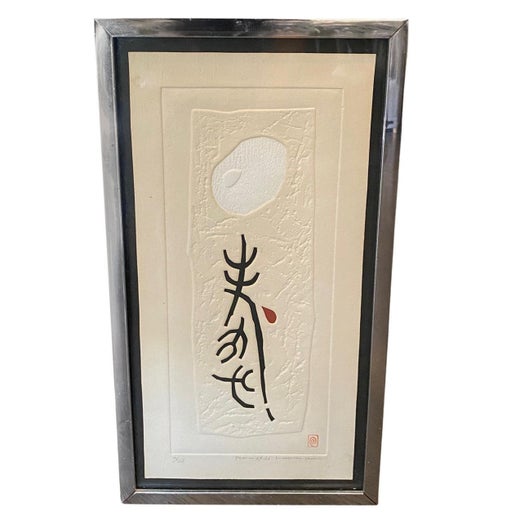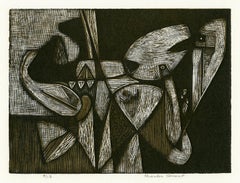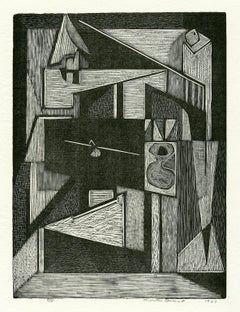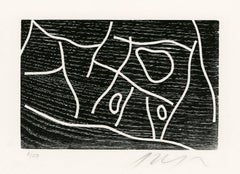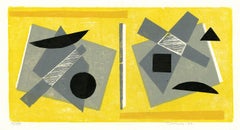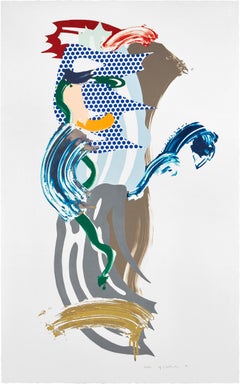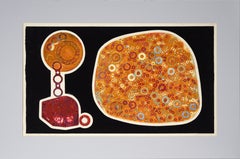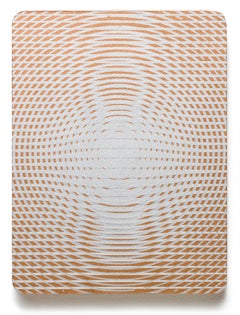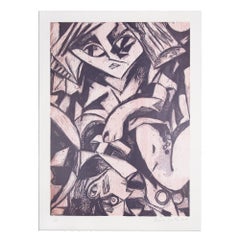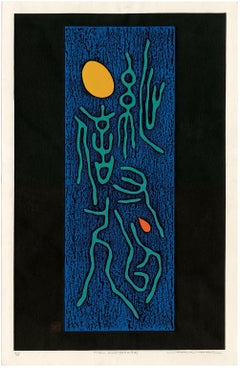
Poem 71-16
View Similar Items
Haku MakiPoem 71-161971
1971
About the Item
- Creator:Haku Maki (1924 - 2000, Japanese)
- Creation Year:1971
- Dimensions:Height: 20.75 in (52.71 cm)Width: 13 in (33.02 cm)
- Medium:
- Movement & Style:
- Period:
- Condition:
- Gallery Location:Myrtle Beach, SC
- Reference Number:Seller: 980941stDibs: LU53234222701
Haku Maki
Maki Haku is the artistic name of Maejima Tadaaki, who was born in Ibaraki Prefecture. He was a sōsaku-hanga artist in the 20th century. During World War II, he was trained as a kamikaze pilot in the Japanese air force, but the war ended before he was assigned a mission. Haku had no formal art training but studied for two years with the sōsaku-hanga artist Onchi Kōshirō. In 1962, he started adding texture to his prints. In 1965, he began embossing designs into an unprinted paper by using a press to transfer a design created in cement on a carved plywood board and then adding color with stencils. Maki Haku participated in the Tokyo International Print Biennale in 1957–60. The Art Institute of Chicago, the Cincinnati Art Museum, the Honolulu Museum of Art, the Los Angeles County Museum of Art, the Museum of Fine Arts in Boston, the Museum of Modern Art in New York and the Philadelphia Museum of Art are among the public collections holding prints by Maki Haku.
More From This Seller
View All1940s American Modern Abstract Prints
Woodcut
1940s American Modern Abstract Prints
Woodcut
1940s Abstract Abstract Prints
Woodcut
Late 20th Century Bauhaus Abstract Prints
Woodcut
1940s Surrealist Abstract Prints
Woodcut
1940s Surrealist Abstract Prints
Woodcut
You May Also Like
1980s Contemporary Abstract Prints
Lithograph, Screen, Woodcut
Late 20th Century Contemporary Abstract Prints
Paper, Ink, Woodcut
21st Century and Contemporary Contemporary Abstract Sculptures
Panel, Monoprint, Woodcut
21st Century and Contemporary Contemporary Abstract Prints
Woodcut
Early 2000s Contemporary Abstract Prints
Paper, Linocut, Woodcut
Early 2000s Contemporary Abstract Prints
Paper, Linocut, Woodcut
